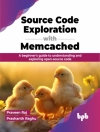Ubiquitous environments are important because they allow users to move about freely and continue the interaction with the available applications through a variety of interactive devices (including cell phones, PDA’s, desktop computers, digital television sets, and intelligent watches). A frustrating limitation is that people have to start their session over again from the beginning at each interaction device change. This book reports results based on the work in the OPEN project. It provides solutions able to address three key aspects: device change, state persistence and content adaptation. There is a lack of migratory services technology for the migration of applications in different usage scenarios. This book offers a general and open migratory service platform solution based on a sound and innovative scientific approach developed by a multi-disciplinary consortium combining the expertise of three technological world leaders, three well-known research organizations and one SME.
Table of Content
Introduction.- State of the Art in Migration.- Migration Opportunities.- The OPEN Migration Platform Architecture.- User Interface Migration based on the Use of Logical Descriptions.- Service Migration Network Support.- Dynamic Reconfiguration of Application Logic during Application Migration.- Design and Development of a Migratory Application based on OPEN Migration Service Platform.- Next-Generation Migratory Emergency Management Application.- Integration of User Interface and Application Logic Reconfiguration: An Example in the Game Domain.- The Usability Evaluation and the Programmability Assessment of Migration.
About the author
Fabio Paternò received his Degree in Computer Science from the University of Pisa (Italy) and his Ph.D. in Computer Science from the University of York (UK). Since 1986 he has been working at the C.N.R. in Pisa, currently at ISTI, where he is Research Director and Head of the Laboratory on Human Interfaces in Information Systems. In recent years, his research interests have broadened to include Ubiquitous Interfaces, Methods and Tools for Multimodal User Interface Design and Evaluation, Accessibility, User Interfaces for Mobile Devices, Model-Based Design of Interactive Systems, End-User Development, and Design of User Interfaces for Safety Critical Interactive Systems. He has published over one hundred and seventy papers in refereed international conferences or journals. He is the author of the book on Model-Based Design and Evaluation of Interactive Applications (widely cited in the scientific literature). He has been the scientific coordinator of five EU projects ( MEFISTO, GUITARE, EUD-Net, CAMELEON, OPEN) and one of the main investigators in several others (such as ADVISES, MAUSE, SIMILAR, SERVFACE, SERENOA). He has been a member of the Steering Committee of the SIMILAR EU Network of Excellence on Multimodal Interfaces.












